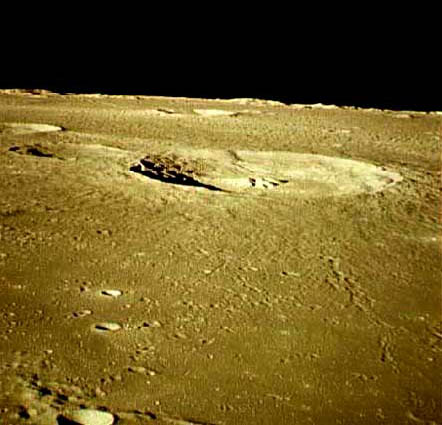Difference between revisions of "August 23, 2004"
| Line 1: | Line 1: | ||
__NOTOC__ | __NOTOC__ | ||
=Almost on the Ground= | =Almost on the Ground= | ||
| + | <!-- Start of content --> | ||
<br> | <br> | ||
<table width="85%" border="0" align="center" cellpadding="6" cellspacing="2"> | <table width="85%" border="0" align="center" cellpadding="6" cellspacing="2"> | ||
| Line 45: | Line 46: | ||
</table> | </table> | ||
<p> </p> | <p> </p> | ||
| + | <!-- End of content --> | ||
{{wiki/ArticleFooter}} | {{wiki/ArticleFooter}} | ||
Revision as of 19:24, 7 February 2015
Almost on the Ground
Image Credit: Apollo 16 AS16-120-19242 |
|
Almost on the Ground Sometimes in the early evening sky, before it glares in complete darkness, the Moon takes on a golden hue, well captured and exaggerated here in a handheld photo by the Apollo 16 crew. The low oblique shot provides a near-profile view of this 60 km wide crater. Can you identify it? The crater's relative freshness is indicated by its sharp rim crest, lack of superposed impact craters, and nice secondary crater chains. The rise of the rim above the surrounding mare is visible both topographically and by the radial ejecta streaks. And the collapsed terraces appear more like mountainous masses than when seen from above. Oh yes, the crater 5/6ths of the way to the horizon and seen as a nearly closed ellipse is Konig. Now can you identify the big crater? Yesterday's LPOD: Schrodinger Tomorrow's LPOD: Don's Crater To Be? |
Author & Editor: |
COMMENTS?
Register, Log in, and join in the comments.




